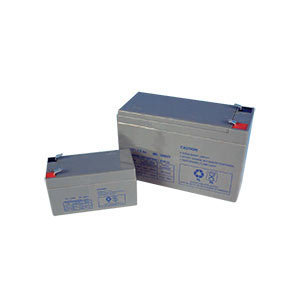
Battery and Solar Design
By Dermot Tynan, almost 13 years ago.
There will be at least two Vcc busses on board. Labeled, oddly enough, as Vcc1 and Vcc2. The difference between them is that Vcc1 is always on, at all times, and Vcc2 (through VccN) are selectable by Igor.
The main processor runs off Vcc2, but Igor (and Otto) both run off Vcc1. In situations where voltage levels are critical, Vcc2 will be switched off and the boat will continue on whatever course had previously been set, until either voltage levels are healthy, the specified "wake-up" time has elapsed, or there are critical issues which require Mother to get involved. A critical situation could be something like a dramatic wind shift, or an error such as a mis-reading from a sensor.
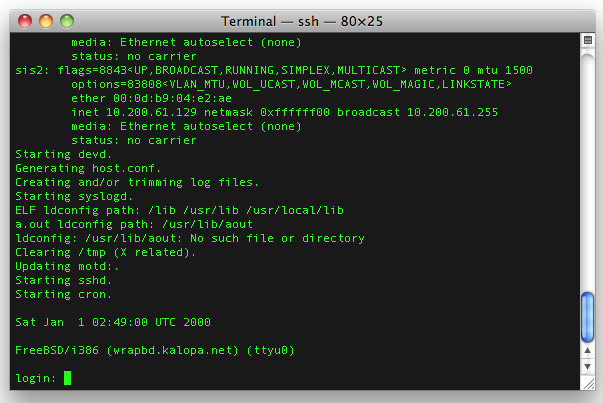
Hello to the Little Red Daemon
By Dermot Tynan, almost 13 years ago.
After much tweaking and hacking with configuration files and kernel build options, I finally have a FreeBSD 8.3-RELEASE kernel and install running on a Wrap board. Technically, it's NanoBSD, which is a scaled-down FreeBSD install, which boots from Compact Flash. The WRAP board is the PC Engines forerunner to the ALIX. When National Semiconductor and AMD stopped making Geode chips, the guys at PC Engines had to stop making their very popular WRAP board. I still have a few of them tucked away, for emergencies such as this.
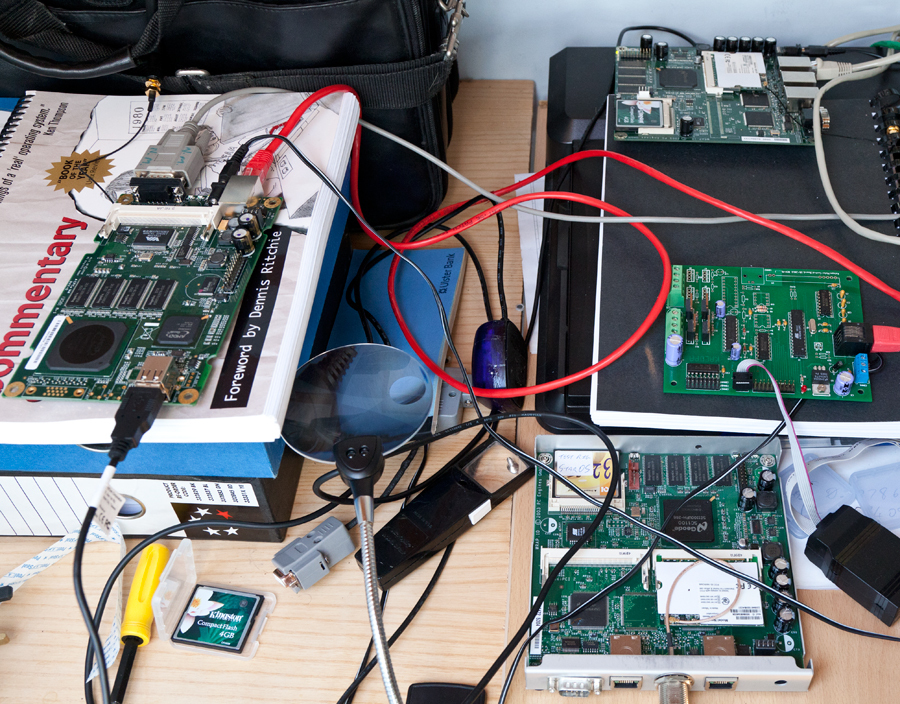
I love it when a Plan comes together...
By Dermot Tynan, over 12 years ago.
The new ALIX board has arrived. It's to the left of the picture, sitting on top of a copy of the Lyon's Notes (which is appropriate). It's running my custom version of NanoBSD quite nicely, and can see the GPS without any difficulty. The GPS unit is a BU-353 unit (the USB version) which is out of the shot. It's attached to the window, and gazing at the man-made stars. To give a breakdown of what's in that photograph, the ALIX is on the left. In the USB port is the GPS, the RS-232 cable at the top of the board is communicating with my development machine (running FreeBSD). The red CAT5 cable is connecting the board to the "house network." The Atheros CM9 radio is a miniPCI card mounted on the underside of the board. It works on 5.8GHz and on 2.4GHz. In this case, I'm using 5.8GHz because (apparently) it has better cross-water characteristics and the band isn't as crowded. The mini coax cable is at the top-left of the picture, connected to a short, 9dBi antenna. You can also see a 12v cable with barrel plug. At the top-right of the picture is a WRAP board, also developed by PC Engines. It was being used as a testbed for the operating system, but that is no longer needed thanks to the ALIX.
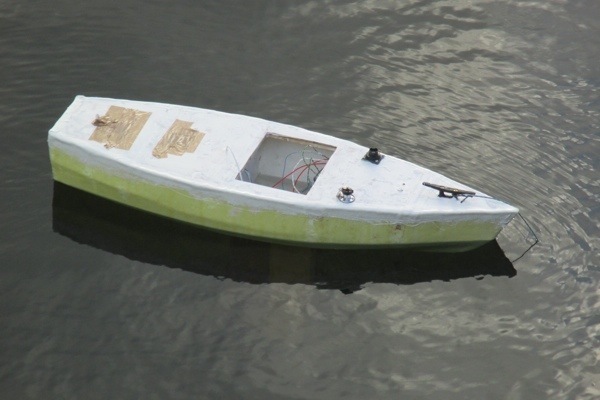
Hull water tests
By Dermot Tynan, about 12 years ago.
Earlier this month, once the hull and keel were mostly finished, we took the boat down to Aughinish bay to see how she performed. I have some video footage of the hull in the water, which I will upload a little later on. To ruin the suspense, Beoga Beag didn't sink! In fact, she moved through the water quite nicely, but more about that later on.
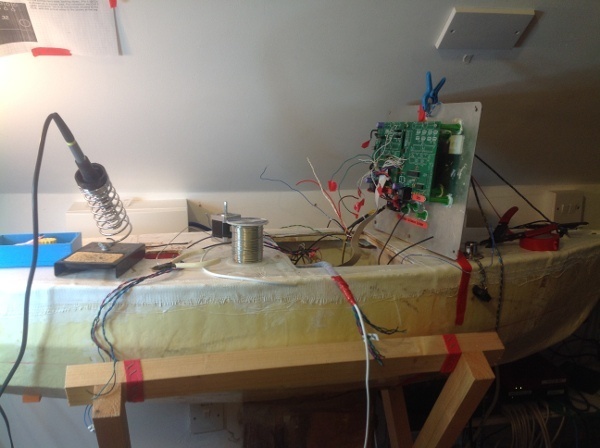
The rubber hits the road. Sort of.
By Dermot Tynan, about 12 years ago.
Due to other, exciting distractions (which I will mention in a later post), I haven't had a chance to keep the blog up to date. Still, work progresses on the boat, and that's the important part. Last month, with the keel now in its new position about 30mm further back along the hull, and sealed into place, it was time to add the electronics board.
Upcoming Missions
- Galway Bay Loop, Waiting for Vessel Availability
Search
Recent Posts
- May 2023 (1 post)
- April 2023 (1 post)
- March 2023 (1 post)
- February 2023 (2 posts)
- March 2022 (3 posts)
- March 2021 (1 post)
- August 2020 (1 post)
- May 2019 (1 post)
- April 2018 (1 post)
- November 2017 (1 post)
- April 2017 (1 post)
- November 2016 (1 post)
- September 2016 (1 post)
- August 2016 (1 post)
- January 2014 (2 posts)
- October 2013 (7 posts)
- September 2013 (1 post)
- August 2013 (3 posts)
- June 2013 (3 posts)
- May 2013 (4 posts)
- April 2013 (3 posts)
- March 2013 (9 posts)
- February 2013 (8 posts)